引言
决策时是一种基本的分类和回归方法,现在主要讨论分类决策树。决策树模型呈树形结构,在分类问题中,表示基本特征对实例进行分类的过程,你可以认为他是一个 if-then 的集合,也可以认为是定义在特征空间与类空间上的条件概率分布。
其优点是模型具有可读性,分类速度快,学习时,利用训练数据,根据损失函数最小化的原则建立决策树模型。预测的时,对新的数据利用训练建立的决策树模型来分类。
决策树学习分为三个步骤:特征选择、决策树生成和决策树的剪枝。主要的决策树生成算法有 ID3 算法、C4.5 算法、 CART 算法。
本文的大纲如下:
- 介绍决策树模型的基本概念
- 决策树的特征选择和学习过程
- 以 ID3 算法为例进行手写数字识别实践
决策树模型的基本概念
决策树模型
分类决策树是一种描述对实例进行分类的树形结构。决策树由节点和有向边组成,节点分为两类:内部结点和叶节点。内部结点表示一个特征或者属性,叶节点表示一个分类。
用决策树分类的过程类似于一系列的 if-then 判断,如下图的一个决策树,圆和方框分别表示内部节点和叶节点,决策分类过程是这样的:首先从顶端的根节点出发,每个内部结点都是一个特征判断,即是 if-then 判断,如果满足特征是一种路径,不满足特征是另一条路径。
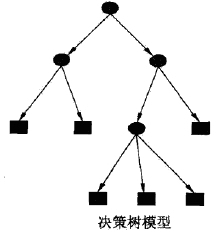
决策树学习
决策树学习,假设给定训练数据集:
其中,$x_i = (x_i^1,x_i^2,\cdots,x_i^n)$ 为输入实力(特征向量),n为特征个数, $y_i\in\{1,2,\cdots,K\}$为类标记,$i=1,2,\cdots,N$,N 为样本容量。学习的目标是根据给定的训练数据集构建一个决策树模型,使他能够进行正确的分类。
而通过上面决策树的概念介绍,我们可以知道,决策树学习本质上是从训练数据集中归纳出一组分类规则。与训练数据集不相矛盾的决策树(即是能对训练数据进行正确分类的决策树)可能有多个,有可能一个都没有。我们需要的是一个与训练数据矛盾较小的决策树,同时有较好的泛化能力。
决策树学习的损失函数通常是正则化的极大似然函数。决策树学习的策略也自然是以损失函数为目标函数的最小化。而这是一个 NP 问题,所以一般采用启发式的方法求得一个次最优解。
决策树学习的算法通常是一个递归的选择最优特征,并根据该特征对训练数据进行分割,使得对各个子数据集有一个最好的分类的过程。
特征选择
特征选择在于选取对训练数据具有分类能力的特征,这样可以提高决策树学习的效率,而衡量特征分类效果的函数就是信息增益函数。
信息增益
信息增益是信息论中的概念,了解信息增益,首先要了解熵和条件熵的定义。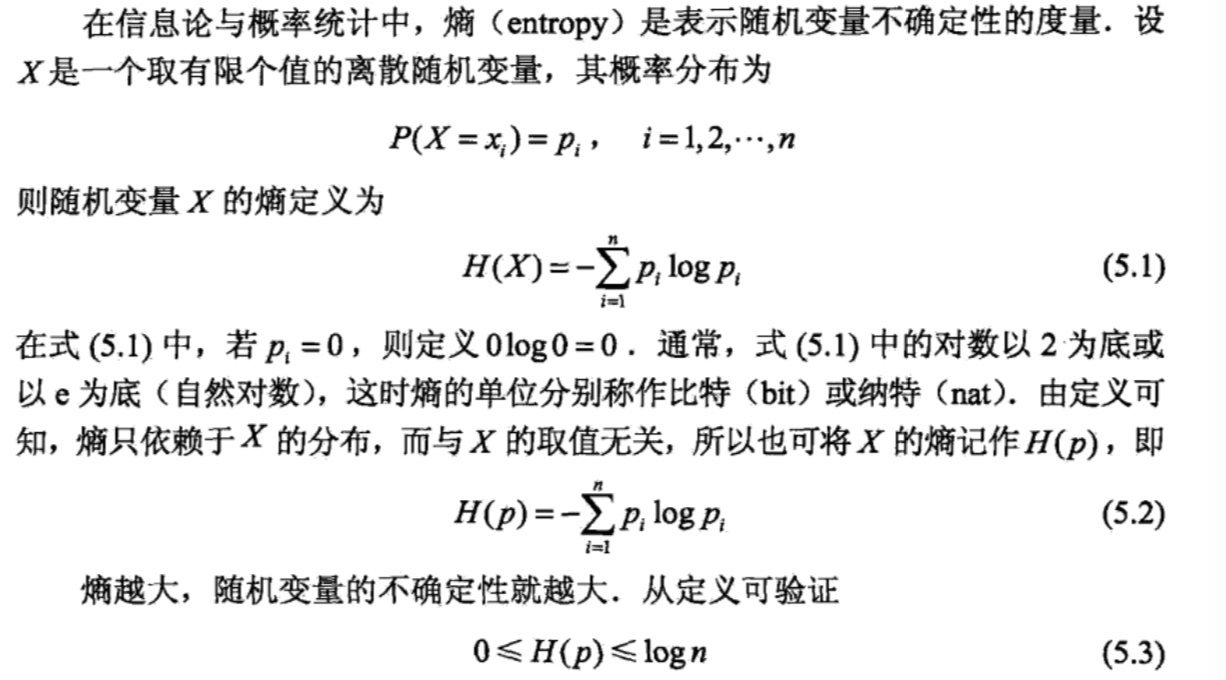
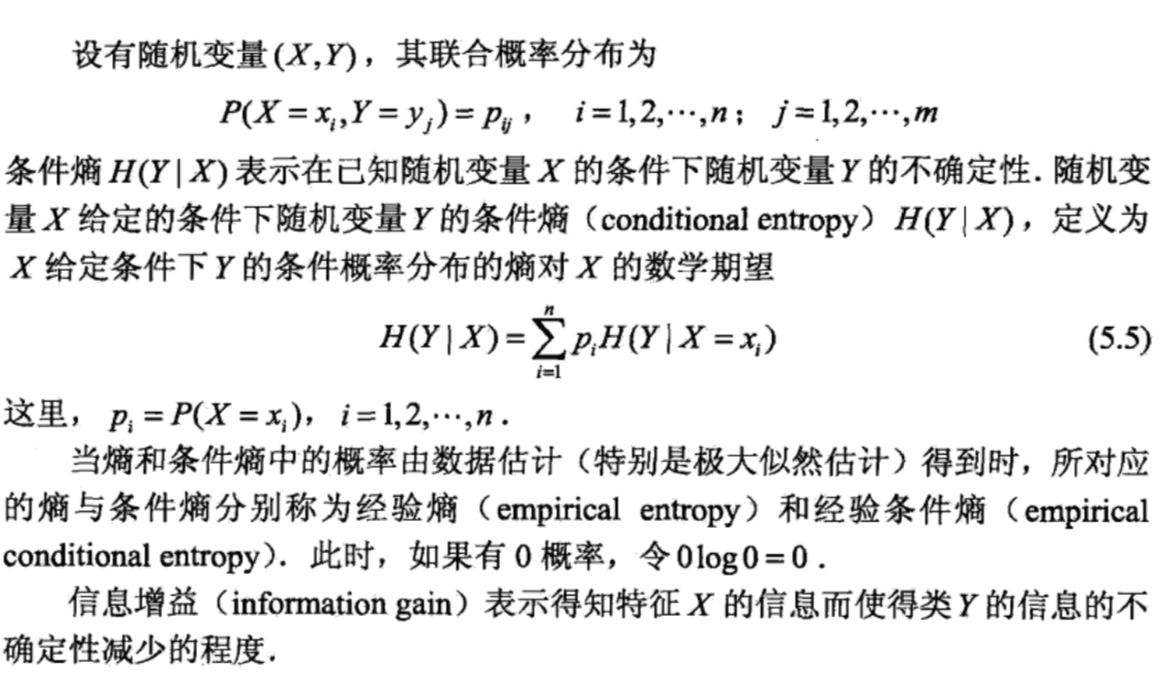
信息增益的定义:特征 A 对训练集 D 对信息增益 g(D,A),定义为集合 D 的经验熵 H(D) 与特征 A 给定的条件下 D 的经验条件熵 H(D|A) 之差,即是:
信息增益算法
- 基本假设

于是信息增益算法如下:
输入:训练数据集 D 和特征 A;
输出:特征 A 对训练数据集 D 的信息增益 g(D,A)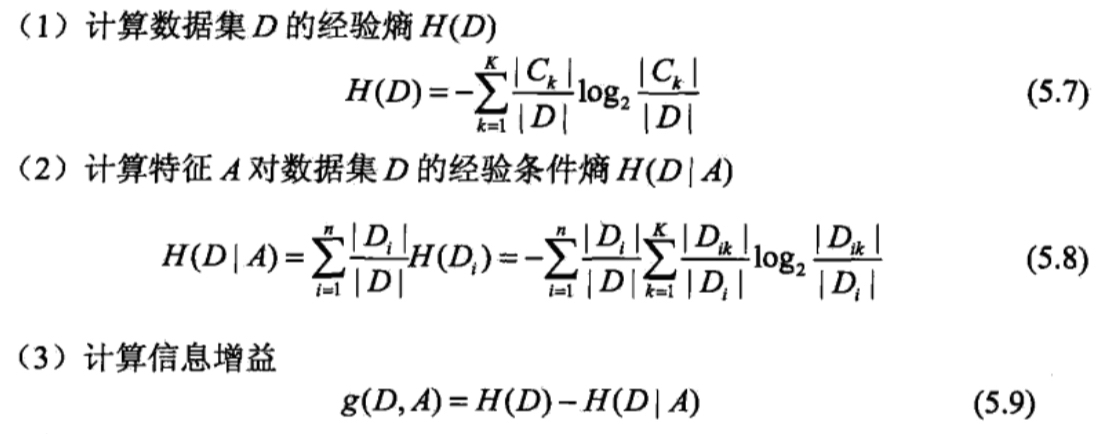
决策树生成
ID3 算法的核心是在决策树各个节点上应用信息增益准则选择特征,递归的构建决策树。具体点方法是:从根结点开始,对节点计算所有可能的特征的信息增益,选择信息增益最大的特征作为节点的特征,由该特征的不同取值建立子节点;再对子节点递归的调用以上方法,构建决策树;知道所有的特征的信心增益均很小或者没有特征可以选择为止。最后得到一个决策树,ID3 算法相当于用最大似然估计进行概率模型的选择。
ID3 算法
输入:训练数据 D,特征集 A,阈值 $\epsilon$
输出:决策树
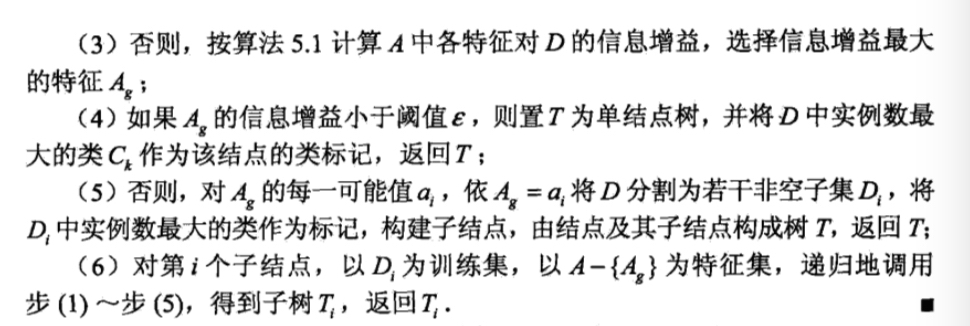
ID3 算法只有树的生成,所以其生成的树很容易过拟合。
以下为该算法的代码在 Mnist 数据集上实现的准确率,86.7%,比不上 KNN 的准确度,但是速度比其快的多。
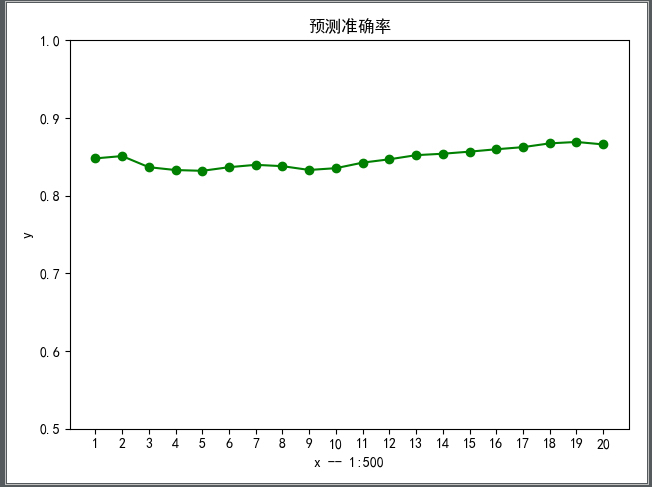
代码如下:1
2
3
4
5
6
7
8
9
10
11
12
13
14
15
16
17
18
19
20
21
22
23
24
25
26
27
28
29
30
31
32
33
34
35
36
37
38
39
40
41
42
43
44
45
46
47
48
49
50
51
52
53
54
55
56
57
58
59
60
61
62
63
64
65
66
67
68
69
70
71
72
73
74
75
76
77
78
79
80
81
82
83
84
85
86
87
88
89
90
91
92
93
94
95
96
97
98
99
100
101
102
103
104
105
106
107
108
109
110
111
112
113
114
115
116
117
118
119
120
121
122
123
124
125
126
127
128
129
130
131
132
133
134
135
136
137
138
139
140
141
142
143
144
145
146
147
148
149
150
151
152
153
154
155
156
157
158
159
160
161
162
163
164
165
166
167
168
169
170
171
172
173
174
175
176
177
178
179
180
181
182
183
184
185
186
187
188
189
190
191
192
193
194
195
196
197
198
199
200
201
202
203
204
205
206
207
208
209
210
211
212
213
214
215
216
217
218
219
220
221
222
223
224
225
226
227#encoding=utf-8
import cv2
import time
import logging
import numpy as np
import matplotlib.pyplot as plt
import testLibrary as tl
ALL_DATA = 60000
total_class = 10
def log(func):
def wrapper(*args, **kwargs):
start_time = time.time()
logging.debug('start %s()' % func.__name__)
ret = func(*args, **kwargs)
end_time = time.time()
logging.debug('end %s(), cost %s seconds' % (func.__name__,end_time-start_time))
return ret
return wrapper
# 二值化
def binaryzation(img):
cv_img = img.astype(np.uint8)
cv2.threshold(cv_img,50,1,cv2.cv.CV_THRESH_BINARY_INV,cv_img)
return cv_img
def binaryzation_features(trainset):
features = []
for img in trainset:
img = np.reshape(img,(28,28))
cv_img = img.astype(np.uint8)
img_b = binaryzation(cv_img)
# hog_feature = np.transpose(hog_feature)
features.append(img_b)
features = np.array(features)
features = np.reshape(features, (-1, 784))
return features
class Tree(object):
def __init__(self, node_type, Class=None, feature=None):
self.node_type = node_type
self.dict = {}
self.Class = Class
self.feature = feature
def add_tree(self, val, tree):
self.dict[val] = tree
def predict(self, features):
if self.node_type == 'leaf':
return self.Class
tree = self.dict[features[self.feature]]
return tree.predict(features)
def calc_ent(x):
"""
calculate shanno ent of x
"""
x_value_list = set([x[i] for i in range(x.shape[0])])
ent = 0.0
for x_value in x_value_list:
p = float(x[x == x_value].shape[0]) / x.shape[0]
logp = np.log2(p)
ent -= p * logp
return ent
def calc_condition_ent(x, y):
"""
calculate ent H(y|x)
"""
# calc ent(y|x)
x_value_list = set([x[i] for i in range(x.shape[0])])
ent = 0.0
for x_value in x_value_list:
sub_y = y[x == x_value]
temp_ent = calc_ent(sub_y)
ent += (float(sub_y.shape[0]) / y.shape[0]) * temp_ent
return ent
#
# def calc_ent_grap(x,y):
# """
# calculate ent grap
# """
# base_ent = calc_ent(y)
# condition_ent = calc_condition_ent(x, y)
# ent_grap = base_ent - condition_ent
#
# return ent_grap
def recurse_train(train_set, train_label, features, epsilon):
global total_class
LEAF = 'leaf'
INTERNAL = 'internal'
# 步骤1——如果train_set中的所有实例都属于同一类Ck
label_set = set(train_label)
if len(label_set) == 1:
return Tree(LEAF, Class=label_set.pop())
# 步骤2——如果features为空
(max_class, max_len) = max([(i, len([x for x in train_label if x == i])) for i in range(total_class)],key = lambda x:x[1])
if len(features) == 0:
return Tree(LEAF, Class=max_class)
# 步骤3——计算信息增益
max_feature = 0
max_gda = 0
d = train_label
hd = calc_ent(d)
for feature in features:
A = np.array(train_set[:, feature].flat)
gda = hd - calc_condition_ent(A, d)
if gda > max_gda:
max_gda, max_feature = gda, feature
# 步骤4——小于阈值
if max_gda < epsilon:
return Tree(LEAF, Class=max_class)
# 步骤5——构建非空子集
sub_features = [x for x in features if x != max_feature]
tree = Tree(INTERNAL, feature=max_feature)
feature_col = np.array(train_set[:, max_feature].flat)
feature_value_list = set([feature_col[i] for i in range(feature_col.shape[0])])
for feature_value in feature_value_list:
index = []
for i in range(len(train_label)):
if train_set[i][max_feature] == feature_value:
index.append(i)
sub_train_set = train_set[index]
sub_train_label = train_label[index]
sub_tree = recurse_train(sub_train_set,sub_train_label,sub_features,epsilon)
tree.add_tree(feature_value,sub_tree)
return tree
def train(train_set, train_label, features, epsilon):
return recurse_train(train_set, train_label, features, epsilon)
def predict(test_set, tree):
result = []
for features in test_set:
tmp_predict = tree.predict(features)
result.append(tmp_predict)
return np.array(result)
def calculate_accuracy(predict_ary, test):
right_count = 0.0
accuracy_ary = []
for index in range(len(predict_ary)):
if predict_ary[index] == test[index]:
right_count += 1
if (index + 1) % 500 == 0:
accuracy_ary.append(float(right_count) / (index + 1))
print("预测值:%d 实际值: %d" % (predict_ary[index], test[index]))
return right_count/len(test), accuracy_ary
if __name__ == '__main__':
logger = logging.getLogger()
logger.setLevel(logging.DEBUG)
# 读取训练数据集和测试数据集的方法和朴素贝叶斯方法一致
print('Start read train data')
time_1 = time.time()
data_map, labels = tl.loadCSVfile("data.csv")
print(data_map.shape, labels.shape)
time_2 = time.time()
print('read data train cost ', time_2 - time_1, ' seconds', '\n')
print('Start read predict data')
time_3 = time.time()
test_data_map, test_labels = tl.loadCSVfile("dataTest.csv")
print(test_data_map.shape, test_data_map.shape)
time_4 = time.time()
print('read predict data cost ', time_4 - time_3, ' seconds', '\n')
tree = train(data_map, labels, [i for i in range(784)], 0.1)
test_predict = predict(test_data_map, tree)
rate, accuracy = calculate_accuracy(test_predict, test_labels)
print("The accuracy score is ", rate)
new_ticks = np.linspace(1, 20, 20)
plt.xticks(new_ticks)
plt.ylim(ymin=0.7, ymax=1)
plt.plot(new_ticks, accuracy, 'o-', color='g')
plt.xlabel("x -- 1:500")
plt.ylabel("y")
plt.title(u"预测准确率")
plt.show()

